The current functioning of the Masonic movement has some positive aspects and others that are blatantly backward and counterproductive.
The Positive Aspects:
Allowing a group of Masons to understand the Masonic process at the level of a lodge was, without a doubt, an avant-garde strategy which still shows its relevance even if the lack of training in group dynamics is today a gap that deserves to be filled.
The universal and international dynamic is also an important asset even if it is difficult to implement at the level of the lodges and can be summed up at the level of the obediences to a set of formal alliances.
Despite the reluctance of those who are afraid to tackle social and cultural questions in a lodge, the Masonic movement at the level of Masons is interested in these questions.
The Negative Aspects:
The organisational plan with its two poles, the local level with the lodges, and the central level with the obediences, and an annual renewal of responsibilities, does not fulfil its role of facilitator of internal and external communication.
The existence of two systems of responsibilities, the obediences and the rites, introduces a confusion prejudicial to the coherence of the whole.
The notion of laboratory of ideas is polluted by the democratic myth and the practice of synthesis; in the end, this potential for innovation is not exploited as it should be.
The ritual can appear as sclerosing and dogmatic if it is not adapted to the specificity of modern group work.
The operation of the high ranks introduces illusion and clientelism: on a pseudo qualitative enhancement, it hijacks the operation of the blue boxes which find themselves dispossessed of all their prerogatives to no longer be more than obligatory areas.
Freemasonry, what future in the 21st century?
If we wanted to summarise the first three centuries of its existence, we could write: ‘Could do better!’
This might seem a bit condescending and pretentious because like any formula, the expression is reductive but it is understandable with regard to the challenge that Freemasonry wanted to take up: to find peace in a society at war on the basis of a value work transposed from the operational level to the speculative level, that is to say on the ethical level.
Invented by an English society on the verge of implosion, adopted by the bourgeoisies of the great countries, masters of the world, instrumented by large and small powers, divided into a multitude of medium and small organisations, Freemasonry continues to interest without to be able to truly retain and develop an audience which nevertheless remains confidential.
In the end, it can be summed up today in a small information network having an institutional status and essentially playing a role in the socialisation of executives, sensitive to humanist progress.
If we analyse the history of collective movements and their organisations, we can clearly see that their evolution always goes through three phases with:
An emerging phase boosted by a combination of support and dissemination through existing networks.
A phase of organisation and structuring of the movement.
A phase of dissemination and consolidation.
According to the movement and the organisation, according to historical moments, and also according to the conflicts of interest and power, these three phases can extend over several decades, sometimes be followed by a phase of regression before experience a new improvement or a virtual disappearance.
These three phases are generally linked to the events of the time and the countries considered and are heavily dependent on the strong propensity of human beings to come together to make their existential concerns prevail.
This development can, of course, be analysed globally but also at the different geographical levels of land territories. This is the case for religious, social, political, or cultural movements.
The Masonic movement very quickly placed itself at an international level; even if secondarily a decline in national positions could be observed, the international dimension has endured. Several contexts interfered:
In the emerging phase (1720-1800)
The discrediting of Protestant sects, providers of social instability.
The crisis of the Catholic Church.
the support of a large part of the English and Anglophile intelligentsia
Europe of ‘enlightenment’.
The French Revolution of 1789.
European expansionism.
The formation of the United States of America.
During the organisation and structuring phase (1800-1870)
Support from the Kingdom of England.
Napoleonic recovery.
Integration into the American constitution.
At the diffusion and consolidation phase (1870-2000)
Integration into the young republics of the South American continent.
The economic expansion of the Napoleon III era.
The commune of Paris.
The Dreyfus affair.
The separation of church and state.
The First World War and its internationalisation.
The Third Republic.
WWII and the resistance.
The Fourth Republic.
The societal debates of the Fifth Republic.
Globalisation.
Today, the global Masonic movement is characterised by:
A strong American presence for Masonry with a large Anglo-Saxon majority.
A backward-looking bourgeois formalism.
A European Masonry divided with a liberal and open current very much in the minority.
Slow feminisation.
Weak involvement of intellectuals.
A real establishment in the workplace (public and private), mainly at the management level.
A little mafia drift that can make a lot of noise.
A refusal to see old rites evolve to keep only the formalism.
An organisational cacophony that preserves its institutional precursor.
A real crisis in the dynamics of management of the obediences with an inability to change their functioning.
A minority but active, more or less sectarian, recourse to an archaic mysticism.
Marketing of the Masonic service with the development of a significant merchant network (books, medals, decorations, trips, websites, catering, etc.)
It is therefore on this situation that the question of the future of the Masonic movement in the 21st century can arise.
This 21st century is very likely to see existing issues reaching the stage of major social crisis:
The environmental issue with global warming and their economic and social consequences.
The exhaustion of the mad race for growth.
Overpopulation and migration.
The risk of nuclear slippage.
The use of artificial intelligence and its impact on employment.
Two scenarios can be imagined:
1) A marginalisation of the Masonic movement at the stage of more or less folklore backward myth.
2) An evolution of the Masonic movement capable of responding to major societal questions.
It is naturally this last scenario which concerns us the most and which would seem to us in conformity with the ambition to see the Masonic ideal fully play its role.
What evolution of the Masonic movement could we hope to see it grow and constitute a hope?
This is a difficult question because not everyone Masonic necessarily agrees on the analysis of the current functioning and on its purpose.
It is clear that there is a need for reforms and that these will only be carried out on the basis of existing structures.
It is interesting to take into account the survey commissioned by the United Grand Lodge of England in 2012, under the title ‘Future of Freemasonry’.
This survey was carried out by a non-masonic research organisation, Social Issues Research Center (SIRC) and has been posted on this site: https://www.freemasonrytoday.com/ugle-sgc/ugle/511
What reforms could we hope for?
General Principles
In the current functioning of large organisations, we can see that their credibility is closely linked:
To the moral and intellectual qualities of national and international leaders.
To financial and managerial integrity.
Has the ability to take on constant media coverage.
The Masonic movement is not immune to these constraints and the reforms to be implemented must facilitate the considering of these requirements. From this basis, one could imagine that the credibility of Freemasonry is reinforced by three dynamics:
Develop the European dimension by moving towards a federal functioning of the obediences.
Develop a quality international Masonic think tank.
Implement a capacity for united action up to the challenges and like those of large international NGOs.
Therefore, the Masonic movement could appear with these two components:
1) An activity at the level of the lodges which would be guaranteed freedom of operation.
2) Organisational functioning better suited to taking into account major societal challenges.
At the level of Masonic structures:
Without wishing to be exhaustive, the modernisation of the functioning of the obediences would have the following objectives: transparency, efficiency, and responsibility.
At the level of the lodge:
Introduce group dynamics in the training of candidates for officer positions.
Limit the number of lodge members to 30 to promote better group management.
Stabilise the management of the group by introducing a vote of officers on the list for three years renewable once.
Improve direct communication between the lodge and the council of the order to:
Reduce internal communication circuits.
Promote a simpler exteriorisation.
Spark innovation.
At the level of obedience:
In the operation of the convent –
Wouldn’t the rule of one lodge represented by one delegate deserve to be transformed by that of three delegates per Masonic region with more regions (about 60), so as not to not exceed two hundred delegates per convention? This would make it possible to better organise a real productive work of the convent.
The treaty, a legislative body, should focus on more targeted work, such as:
Control of the functioning and the budget of the various components of the obedience.
Foresight.
International.
In the functioning of the council of the Order:
The Grand Master (or Grand Mistress) could be elected by all the members every three years with the freedom to choose the members of the council of the Order (for a limited number of around ten members) ; this would stabilise and strengthen the authority of the Grand Master (or the Grand Mistress).
To introduce a safeguard measure, the Grand Master (or the Grand Mistress) and the council of the order could be resigned by a conventual resolution bringing together 3/5 of those registered.
In the functioning of Obedience:
Simplify the procedures of Masonic justice.
Introduce new bodies, independent of the council of the order, responsible to the convent, such as:
Financial management advice.
Advice from property management.
A council for the organisation of rites.
Imagine reception structures for a wider public: associations, interactive websites, etc.
Create member training structures by associating existing training structures.
The Masonic Challenge of the 21st Century: Achieving Multiculturalism in a Lodge
The development of international exchanges, migrations and interbreeding in all its components explains the development of multiculturalism which will inevitably prevail over the centuries to come.
Today it is a reality in Europe and North America, mainly in large cities and more and more in towns, but tomorrow it will concern even more geographic areas.
Some people regret the frank national identity and present multiculturalism as a dangerous ideology that should be fought, but is it not quite simply an inescapable sociological fact?
Nationalist withdrawal and the temptation of a mythical identity will not resist reality.
For us Freemasons, followers of universality, curious about cultural and philosophical diversity, multiculturalism cannot be an element of concern and cannot act as a foil to take refuge in denial.
Although almost all Masonic rituals have a biblical basis, the Masonic process naturally opens up to multiculturalism. Beyond the declaration of intent, the implementation of multiculturalism in lodges and obediences deserves a refined reflection at the level of the different structures of the Masonic movement and this for several reasons:
Masonic lodges are open to all subjects of good will wishing to discover an original place of reflection; Apart from French people from several generations linked to our territory, others have merged more recently and wish to keep either a dual nationality or an attachment with extra-national family origins.
If Masonic practice does not concern religious opinions, it cannot be denied that multiculturalism implies respect for the cultures of different members of communities; this supposes a minimum of ethnic origins. To speak only of the French obediences, the establishment of their lodges is worldwide; for example in terms of language, a London GODF lodge already works with the English language; tomorrow, would it not be possible to see lodges using the Kanak language in New Caledonia, Creole in the West Indies, Wolof in Senegal, etc.
If today the biblical inspiration of rituals does not bother people of religion or of Christian or Hebrew culture, it can be a blocking element for people who do not consider the Bible as an essential reference. The creation of a ritual open to non-European cultural references seems likely in the near future.
Opening lodges to atheists and unbelievers can also be an element of change and adaptation.
Diversity, which is an accepted reality today, should also be taken into account in its multicultural aspect: for example, wearing the veil should not be incompatible with respect for secularism.
It is a huge project that is opening up to us and which should mobilise all those who want Freemasonry not to be confined to fixed, backward-looking habits and to be able to welcome a wide variety of columns. to be human by offering them respect and listening to their experiences.
As Martin Luther King wrote, is it not important to state:
Let us live together like brothers, or we will die together like fools.
Blog by: Mateo Simoita

Mateo Simoita is the man responsible for Masonic Ideal Blog- he is a retired doctor and was initiated in 1979 in the Grand Orient of France.
His blog is produced in French but has the option to translate content into English.
Recent Articles: membership
 A Rose by any other Name may not be the same Explore the profound distinctions between conferred and transmitted Masonic degrees with Bro. Scott Wisdahl. Delve into how presentation quality, personal impact, and setting shape these rituals, and consider the potential for digital adaptations in modern Masonic practices. Join the discussion on enhancing the Masonic journey and preserving its essence. |
 Progression through the Degrees; a Rite or a Privilege? Exploring the layered journey of Freemasonry, Matt DA Fletcher probes the essence of progression—whether it's a mere rite or a privileged path. Delve into a nuanced perspective where every degree is not just a milestone but a fraction of a grander continuum. |
 Quantity vs Quality within the world of Freemasonry Dive into the compelling debate of quantity vs quality within the world of Freemasonry. Discover the transformative focus on attracting members aligned with the institution's values, promising not only growth but quality growth. High-value individuals assure sustainable development with their commitment to serving the brotherhood. |
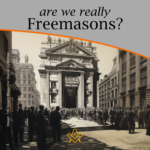 Maybe Freemasonry has opened its doors too wide. Perhaps some have not understood that the survival of Freemasonry in order to achieve its sublime purpose lies not in the number of members it has, but in their quality. Maybe we need less members and more Freemasons. Less men in Freemasonry and more Freemasonry in men. |
 What is ritual and why is it important? P1 Delve into the profound world of Freemasonry rituals and their significance. This insightful piece unravels the underlying importance of rituals, their impact on participants, and the transformative power they hold. Uncover why these centuries-old traditions remain integral to Masonic practice today. |
 Could Freemasonry be helpful for young men? Unravel the Masonic Brotherhood: Could Freemasonry be the antidote to modernity's challenges for young men? Dive in as we explore the Masonic world, its principles, camaraderie, and how its traditional rituals could help forge stronger identities in an increasingly complex world. |
 Discover the remarkable benefits of Lodge Meetings on your well-being. From fostering connections to combating stress, learn how these male-oriented gatherings offer an antidote to anger, hunger, isolation, and exhaustion. Dive into the power of shared experiences, understanding, and camaraderie. Your key to improved mental health awaits inside. |
 Tutorial for a Worshipful Master Unlock the Secrets to Leadership Mastery in our Worshipful Master's Tutorial! Brother Antonio Biella shares step-by-step guidance for Masonic Lodge leaders on honing their roles, duties, and future vision. Discover how to drive growth and engagement in your Lodge, setting ambitious goals and inspiring member participation. |
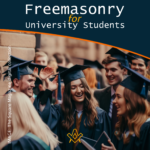 Freemasonry for University Students What are social skillset challenges facing students when they graduate from university ? |
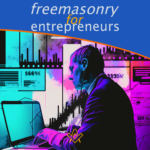 How the Core Values of Freemasonry; Brotherly Love, Relief and Truth Can Be Applied to Improve Productivity For Entrepreneurs |
 Why I became a Freemason: a personal journey of self-improvement Salik Tariq shares his reasons for becoming a Freemason – a journey of self-improvement, finding a community, and personal growth. |
 Freemasonry: Coming out of the Cloisters This paper examines the fundamental tensions on the lines of religion, gender and political ideology that exist in some jurisdictions of Freemasonry. It is on the first of these, religion, on which he makes an initial and exploratory focus. - by Gerald Reilly |
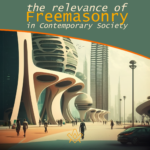 The Relevance of Freemasonry in Contemporary Society The role of Freemasonry in contemporary society is an indispensable one. Despite the challenges and misconceptions it faces, the organization remains steadfast in its humanitarian pursuits and commitment to personal growth and self-betterment. Through its efforts to evolve and adapt to the changing needs of its members and the world, Freemasonry continues to be a vital force in shaping a better future for all. |
 Has Freemasonry managed to revive and thrive after the darkness of the Pandemic? Robert Lomas gives us some (promising) insights. |
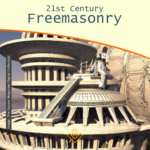 21st Century Freemasonry – a Sign of the Times? A recent article in The Times of London highlighted the dilemma 21st Freemasonry is facing. In this article one Master Mason shares his views of the strengths, and the challenges of modern Masonry. |
 A concept that is both based on our Freemasonic rituals and what we understand as teamwork. This article by Chris Batty examines why teamwork in the lodge is the network that binds us. |
 Lebanese Freemasonry has been both witness to and sometimes participants in turbulent events and forces, which shaped and influenced their world. |
 Is a Masonic Tradition Necessary? Dealing with Masonic tradition is a complex subject that requires careful analysis in order to reach a balanced point on the best etymological definition and the set of discourses and practices, which often end up being presented as such, without, however, presenting bases that support them, often serving only as a discourse that restricts and controls the masses. Fernando Rodrigues de Souza debates this complex subject. |
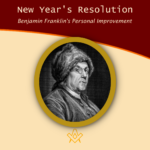 New Year's Resolution with Benjamin Franklin's Personal Improvement Are you ready for a new year's resolution challenge ? To accomplish his life’s goals, at 25 ( around 290 years ago ), Benjamin Franklin developed and committed himself to a personal improvement program that consisted of 13 virtues. You are invited to join me in practicing his daily routine for 2023. |
 The Alberta Masonic Higher Education Bursary Fund is to help the next generation of Albertans, our children and grandchildren, to obtain the education they need to lead successful lives and contribute to the welfare of mankind. As you can see from this little lesson of our history, education is truly a Masonic obligation. |
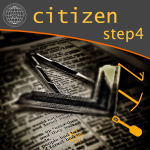 To be a Better Citizen of the World: Step 4 A value proposition for Pure Ancient Masonry as defined in terms of Citizenship; the allegories, symbolism and lessons are a blueprint for all Freemasons to be a better citizen of the world. |
 To be a Better Citizen of the World; Step 3 A value proposition for Pure Ancient Masonry as defined in terms of Citizenship; the allegories, symbolism and lessons are a blueprint for all Freemasons to be a better citizen of the world. |
 In connection with recent article about Freemasonry in the metaverse, we look at how an Egregore applies to Freemasonry in a digital world |
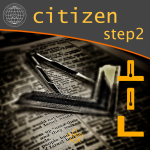 To be a Better Citizen of the World; Step 2 A value proposition for Pure Ancient Masonry as defined in terms of Citizenship; the allegories, symbolism and lessons are a blueprint for all Freemasons to be a better citizen of the world. |
 There are many brotherhoods in the world, and Freemasonry is one of the most significant and successful of them all. This article will be the focus two questions: the importance of brotherhood ? and is there room for improvement in Freemasonry? |
 Intergenerational relations in Masonry: challenges and possibilities Backed with scientific research, Professor Luiz Neto and Professor Alexandre Braune investigate the Intergenerational relations in Freemasonry and explores the challenges and opportunities. |
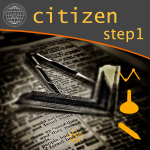 To be a Better Citizen of the World; Step 1 A value proposition for Pure Ancient Masonry as defined in terms of Citizenship; the allegories, symbolism and lessons are a blueprint for all Freemasons to be a better citizen of the world. |
 The Masonic Temple is a platform where both Freemasons and non-Masons, enthusiasts of real art and spiritual growth, connect to the new world of the metaverse. A Freemasonry in the metaverse project, based regular freemasonry principles. |
 Opportunity to fix the Sussex fudge Is there a value proposition for members, that under English Constitution Freemasonry, we have a 4 part offering; Entered Apprentice, Fellowcraft , Master Mason and Companion, conducted in a single craft lodge ? |
 Value Proposition of Freemasonry In addressing declining lodge membership and lack of attendance, we need to assess the value it offers to members. What is value, and what does it mean to you? |
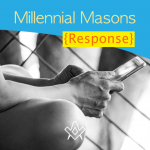 What is a 'Millennial' and what do they want from Freemasonry? You'll be surprised at the answers. |
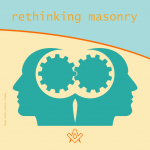 Let us help answer a fundamental question, from a confused newly raised brother asking “What does it all mean and where do I go from here?” |
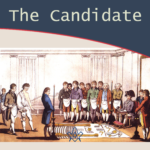 Written in 1930, much of the advice is still relevant today - although some may provoke further thought or debate! |
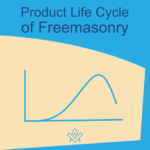 Product Life Cycle of Freemasonry An inconvenient truth about the product life cycle of Freemasonry |
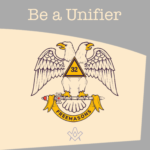 Freemasonry is local. This is where we need to start. We start with our Facebook friends, our neighbours, our colleagues, our lodges… |
 Freemasonry in the time of pandemic The Rule of Six. Localised lockdowns. Second wave? What do we do now?! The answer is simple - engage with members, promote Masonic education and get thinking outside the lodge. |
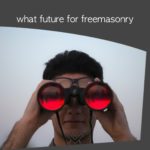 The current functioning of the Masonic movement has some positive aspects and others that are blatantly backward and counterproductive. |
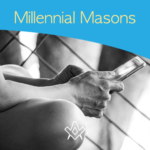 What is a 'Millennial' and what do they want from Freemasonry? You'll be surprised at the answers. |
 How to improve your Lodge Membership Marketing Program. |
 The Anti-Social Impact of Social Media The 'dark side' of social media and its negative effect on our mental health |
 If Freemasonry cannot meet, is this an opportunity to make a change to how we do things? |
 Has your lodge accepted an unknown candidate from the internet? Third in a three-part series looking at the process to accepting candidates via the internet |
 Is the brother of a brother a brother ? Rights to visit - recognition and regularity re-evaluated. |
 The second article in the Unknown Candidate series - Outlining the social media marketing process to attract the unknown candidate to make that first enquiry |
 Ask a random Freemason the purpose of Freemasonry and the likely response will be to “make good men, better”. Research undertaken by James Justin Davis Pennsylvania Academy of Masonic Knowledge. |
 Has your lodge accepted an unknown candidate from the internet? First in a three-part series looking at the process to accepting candidates via the internet |
 Mental Health - Raising its awareness and how we as Freemasons throughout the entire UK can help our fellow brethren and their families when they need it. |
 Share one thought why freemasonry is relevant today - Open question posted on Facebook with a very wide range of responses from Brethren across the globe |
 The Tipping Point of Freemasonry Why do brothers lose interest in Freemasonry and what can we do to get that spark back? At what moment did our own thoughts begin to waver? |
masonic knowledge
to be a better citizen of the world
share the square with two brothers

click image to open email app on mobile device
Tubal Cain
Masonic Apron NFT
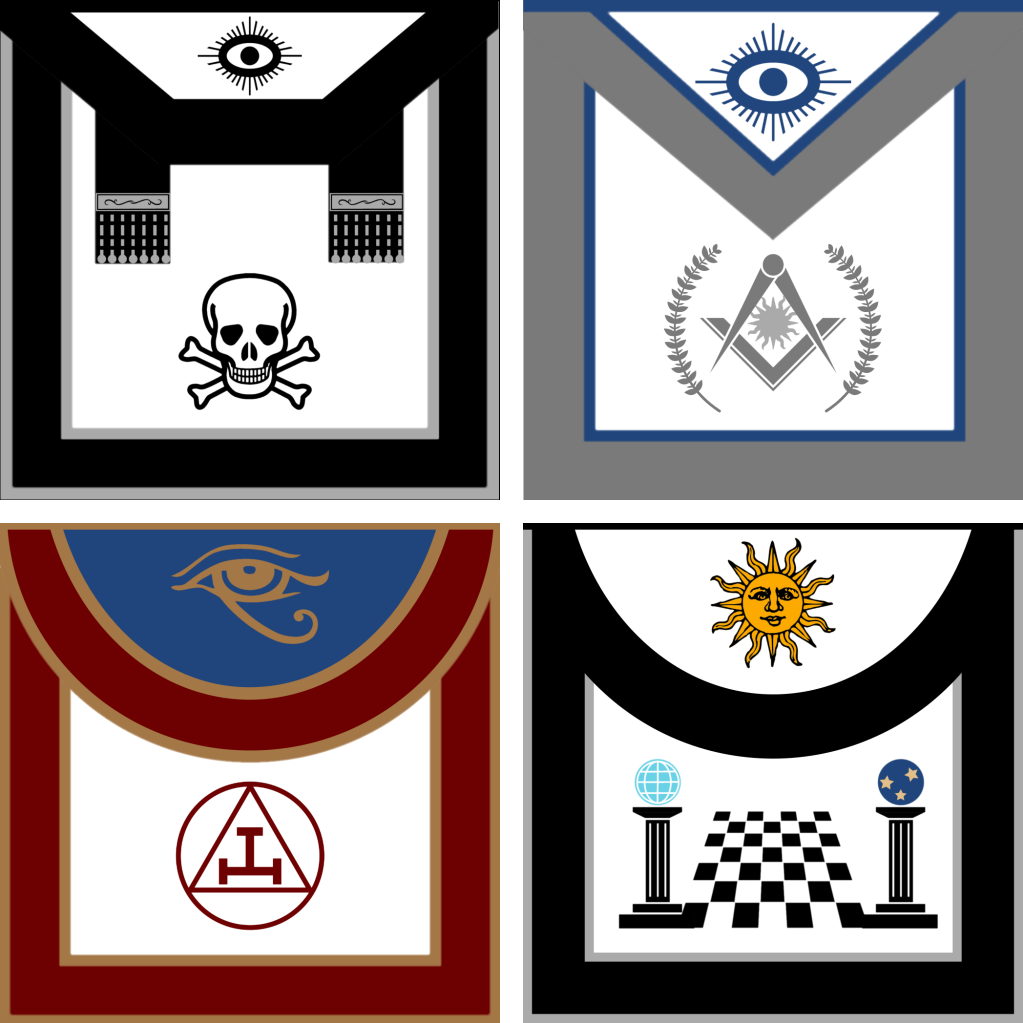


Each NFT includes the JPEG image plus a full size masonic apron and shipping worldwide





